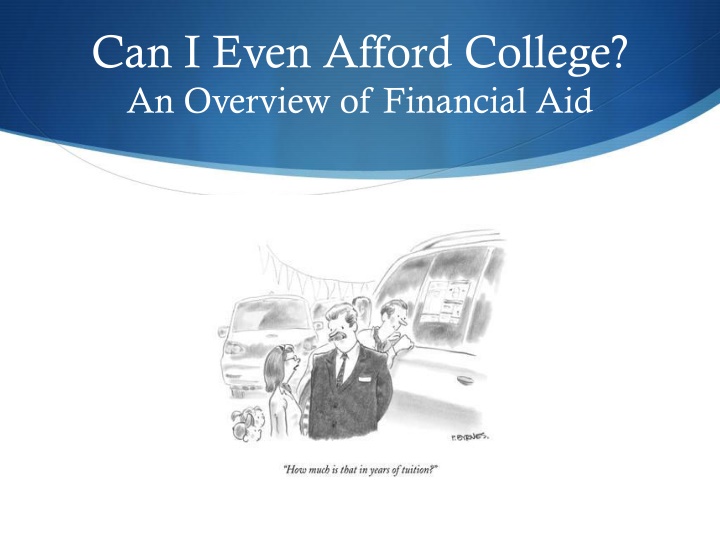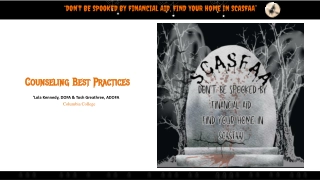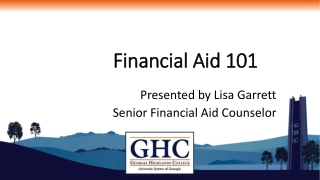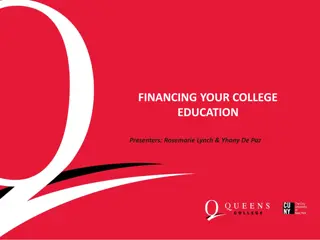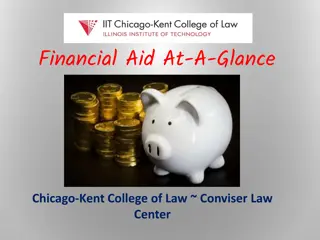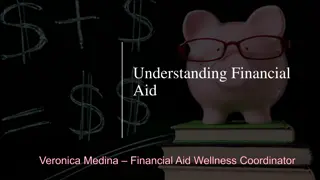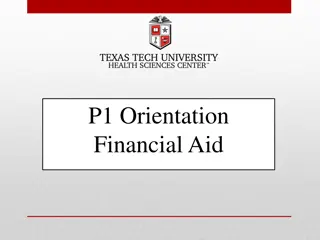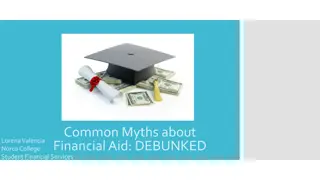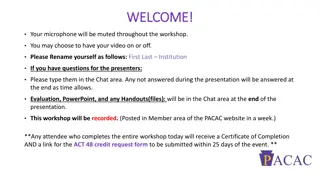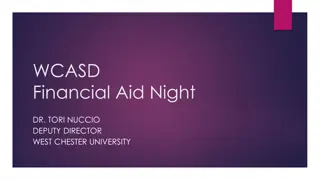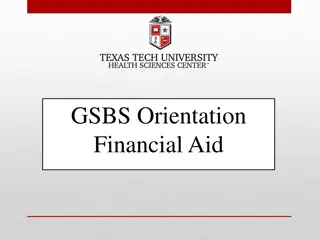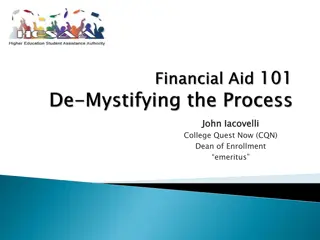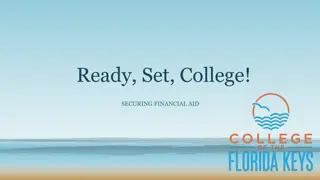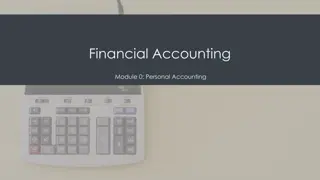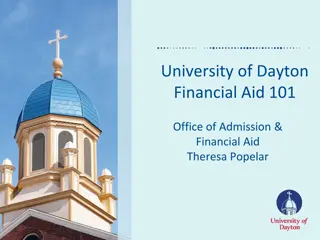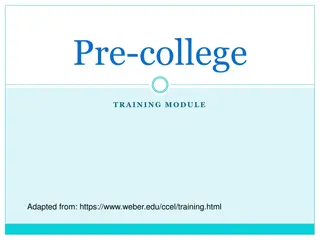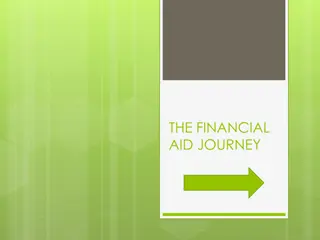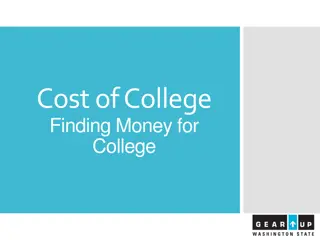Navigating College Financial Aid: An Essential Guide
Explore the ins and outs of financial aid for college, including understanding the cost of attendance, types of aid available, where aid comes from, qualifications, application process, and crucial insights on completing the FAFSA. Empower yourself with knowledge to make informed decisions about pursuing higher education without breaking the bank.
Download Presentation

Please find below an Image/Link to download the presentation.
The content on the website is provided AS IS for your information and personal use only. It may not be sold, licensed, or shared on other websites without obtaining consent from the author.If you encounter any issues during the download, it is possible that the publisher has removed the file from their server.
You are allowed to download the files provided on this website for personal or commercial use, subject to the condition that they are used lawfully. All files are the property of their respective owners.
The content on the website is provided AS IS for your information and personal use only. It may not be sold, licensed, or shared on other websites without obtaining consent from the author.
E N D
Presentation Transcript
Can I Even Afford College? An Overview of Financial Aid
Cost of Attendance (COA) Direct Costs (paid to the school) Tuition and Fees Room and Board Indirect Costs (everything else) Books Travel Insurance Personal Expenses (clothing, electronics, etc.)
COA Varies from School to School Georgia State Oglethorpe Tuition and Fees (in-state) $10,686 $35,280 Room and Board $10,972 $12,710 Books and Supplies $ 1,600 $ 1,100 Transportation (parking) $ 720 $ 75 Personal Expenses $ 1,000 $ 1,000 Total COA for one year: $24,978 $50,165
Sticker Price Can Be Shocking But it s not what you re likely to pay Why not? Financial Aid
Your Financial Aid Award Package May Include: Gift Aid (Free Money!) Grants Scholarships Self-Help Aid (Not Free) Work-Study (You must work to earn it) Loans (You must pay them back)
Where Does Aid Come From? The Government Federal, State The College or University Private Organizations (businesses, foundations, clubs, etc.)
How Do You Qualify for Financial Aid? Two ways: Financial Need Merit (academic, athletic, musical, community service, leadership, etc.)
How Do I Get Aid? FAFSA Filling out the Free Application for Federal Student Aid is the single most important thing you can do! Available on October 1 www.fafsa.ed.gov Some schools also require the CSS Profile
What does the FAFSA ask for? Parents income and assets Student s income and assets Demographic information (how many students are in the household, how many are attending college, age of oldest parent, etc.)
After you complete the FAFSA You ll receive a Student Aid Report (SAR) This will include your Expected Family Contribution (EFC)
Estimate your EFC now with the FAFSA4caster Visit www.fafsa.ed.gov
Estimate your EFC now with the FAFSA4caster For a family with two students in college and income of $45,000: Estimated EFC is $1,273 per year For a family with one student in college and income of $70,000: Estimated EFC is $6,751 per year For a family with two students in college and income of $150,000, Estimated EFC is $17,146 per year
COA EFC = Need Georgia State $24,978 - $6,751 = $18,227 Oglethorpe $50,165 - $6,751 = $43,414
Another great tool: Net Price Calculator Every school s website has a Net Price Calculator Estimate how much federal aid you could get Some estimate how much merit aid you could get This is a great way to get an estimate of how much a school might cost Note that this is for ONE year of school
Example: GSU for family with one student and $70,000 in income
Example: GSU for family with two students and $45,000 in income
Maximizing Institutional Scholarships For the best shot at the greatest amount of merit aid at a particular school, you need to be in the top 25% of admitted students. Check College Board to see where your grades and test scores fall at a particular school. Check College Navigator for the school s the average award.
Online Tool: College Board s How Do I Stack Up?
Private Scholarships Can help, but it s going to be difficult to fill the gap entirely this way. Resources: websites like Fastweb, College Board, Niche, Scholly, and many others. Check CCC website for link to counselors list of scholarships. Downsides: a lot of work, uncertain, you have to keep at it. Upsides: all free money is good
Loans: Federal vs. Private Federal Loans have a fixed interest rate and flexible repayment terms. Federal Subsidized Loans (based on need): no interest accrues while you re in school Federal Unsubsidized Loans (anyone has access): interest does accrue while you re in school There is a cap to federal loans, so you can t get too deeply in debt.
Loans: Federal vs. Private Private Loans (Wells Fargo, Sallie Mae, etc.) may have a variable interest rate that can go up, and the terms of repayment can t be changed. It is best to avoid private loans!
Rising Senior Summer Checklist for Financial Aid: Parents and students: discuss finances Visit FAFSA4Caster to get an idea of your EFC Run the Net Price Calculator at each school on your list Evaluate the likelihood you ll receive merit aid at each school on your list Look for private scholarships and apply for some
